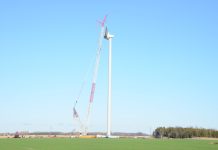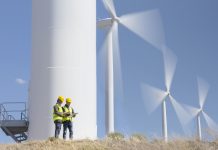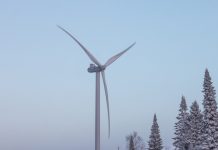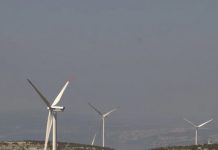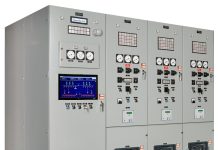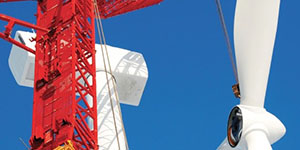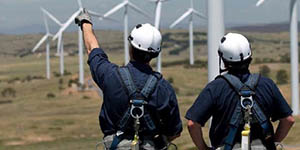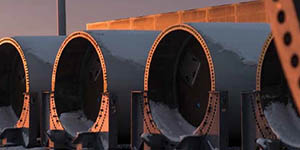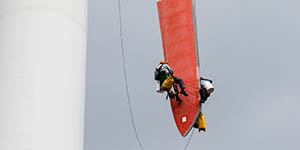In the wind-energy industry, conversations about safety often center on tower heights, blade lengths, or extreme weather events. But for those in the field — technicians, inspectors, engineers, and operators — safety starts long before a blade ever turns. It begins with decisions made during design, the precision on the manufacturing floor, the hands that install, the eyes that maintain, and the teams who inspect.
At the core of every safe wind turbine is one simple truth: quality is safety.

The Blades
The towering blades that cut through the sky are marvels of composite engineering. But they are also among the most vulnerable components in the entire wind-energy system. Spanning up to 80 meters and weighing several tons, a single blade carries enormous loads with every rotation — millions of cycles, year after year. While these blades are designed for decades of service, their true safety margin depends not only on the blueprint, but on the discipline applied at every stage of their lifecycle.
When most people outside the industry hear about blade failures, they picture dramatic scenes: blades shearing off towers, collapsing structures, or scattered fragments across a field. These catastrophic failures, however, rarely happen without warning. More often, they are the result of small, often invisible defects that quietly build over time until the system can no longer tolerate them.
Some of these flaws begin during design — miscalculations in load paths, insufficient bondline durability, or underestimated lightning strike effects at structural interfaces. Others arise in manufacturing: bondline voids, poorly cured laminates, or contamination introduced during layup. Still more appear during handling, transport, or installation, where minor damage can worsen after thousands of operational cycles.
Nowhere is this risk more serious than at the blade root, where composite materials, steel inserts, and fasteners meet under extreme stress. This is the point where every operational load transfers into the turbine’s rotating hub. If the root fails, there is no backup. The blade separates. The hub destabilizes. And in extreme cases, the tower can collapse. Cosmetic damage elsewhere may reduce performance, but root failures carry serious safety threats.

Before Installation
The journey toward failure often begins before the blade is ever installed. Transportation damage remains one of the most overlooked contributors to blade integrity problems. As blades grow larger, more flexible, and structurally complex, the risks during transport increase dramatically.
Field teams have documented numerous cases where impacts to the root bushings occurred during loading or unloading. Something as simple as a forklift arm lightly striking a threaded stud can introduce tiny cracks in the metal insert. These flaws may not prevent immediate installation, but once the turbine begins operation, fatigue cycles take over, and the cracks grow. If left undetected, they progress into bondline separations or full bushing fractures, both of which carry serious safety consequences.
Vibration during long-haul trucking, improper stacking for overseas shipments, and inconsistent cradle support all add to the potential for subsurface delamination, which may remain hidden for years without targeted inspection.
If transportation introduces early risk, installation becomes the final hands-on moment before blades enter decades of service. Mistakes during this stage often involve much more than simple misalignment. Bolt tensioning methods, torque settings, preload sequences, and balance tolerances all carry long-term safety implications. While some debate remains between torque and direct tensioning approaches — often dividing new-school and old-school practices — any deviation from proper specifications introduces long-term safety risks.
One of the most dangerous risks is under-torqued bolts at the root connection. Even minor deviations from specification can allow microscopic movement between mating surfaces, generating heat, initiating cracks, and eventually causing stud failures. In severe cases, entire root sections have detached while spinning, sending blades hundreds of meters away and bringing down towers.
Every installation technician working at height is not simply assembling hardware. They are signing off on the structural safety of that turbine for the next 20 or 30 years. The responsibility they carry affects not just the operators but the landowners and nearby communities as well.
Even with strong design, manufacturing, and installation practices, no system is flawless. Inspection often serves as the final line of defense. As blades now exceed 100 meters in length and towers climb even higher, advanced inspection technologies become increasingly critical.
Ultrasonic phased array systems have become essential tools. They allow technicians to map subsurface bondlines at the root, routinely detecting partial disbonds, delamination growth, and early signs of stud interface cracking. If not addressed, any of these conditions could eventually lead to blade separation.

Taking Inspection to the Next Level
Modern inspection goes beyond scheduled maintenance. Post-transport receiving inspections, periodic torque checks, and advanced NDE scans all help identify developing issues before they escalate. The best inspection programs do not simply search for defects; they monitor defect growth and track changes over time, providing operators with actionable information to plan repairs or replacements safely.
Even after blades are installed and inspected, the safety work continues. Maintenance teams face a constantly evolving list of risks: leading edge erosion from rain and sand, lightning strike damage, temperature-induced fatigue cracking, and progressive weakening of adhesive bondlines.
The environment is relentless. UV radiation, moisture cycling, ice loads, and thermal gradients all work against structural integrity. Fatigue cracking often begins deep within the laminate, invisible to surface inspection until significant damage has already occurred.
Without consistent, technically sound inspections, these aging effects slowly erode the safety margin. As fleets age, blades approaching the end of their fatigue life will require more frequent and specialized evaluations.
Many safety programs focus on responding after something goes wrong. In wind energy, real safety depends on discipline applied years, sometimes decades, before a failure occurs. It requires full commitment from everyone involved: engineers, factory workers, transport crews, installers, inspectors, and operators. It demands clear communication, well-defined procedures, and ongoing investment in both people and technology.
No single inspection or one-time procedure guarantees blade safety. What protects workers, communities, and assets is the accumulated effect of thousands of quality decisions made throughout the blade’s life.
In that sense, quality is not simply an engineering metric. It is a safety behavior.
Rising Stakes
As wind energy continues to grow across the globe, safety cannot remain a background conversation. Blades are getting longer. Loads are increasing. And the stakes — both financial and personal — are rising. The industry’s real commitment to safety will not be measured by marketing slogans, but by its willingness to invest in quality at every step: design, manufacturing, transportation, installation, inspection, and maintenance. Because when a 70-meter blade releases from its hub, there are no second chances.




